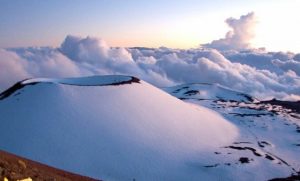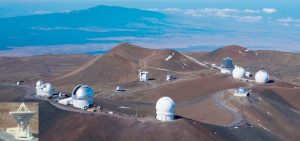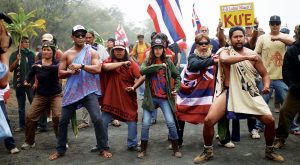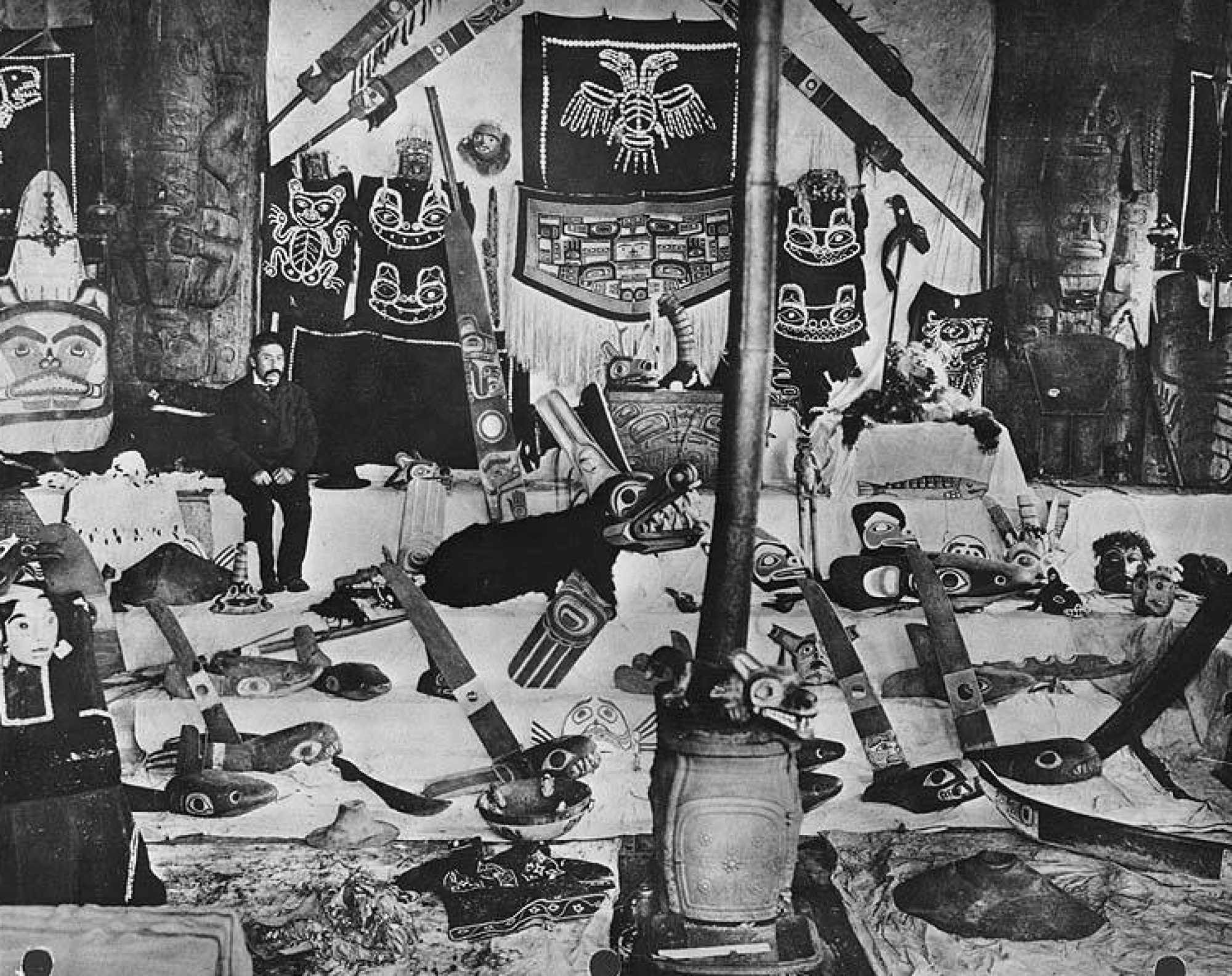Biographical Timeline | Leadership Qualities | Mauna Kea | References

Mauna Kea is a dormant shield volcano located in Hawaii, with the tallest summit in the region at almost 14,000 feet above sea-level. Mauna Kea is considered a sacred place for the native people of Hawaii, because of it’s many sites of natural and cultural significance such as traditional cultural properties, buildings and trail systems. The land is rich with objects of cultural significance that maintain the cultural identity of the Hawaiian community.
In addition to Mauna Kea’s cultural significance to Native Hawaiians, the land is also known for being the optimal spot for astronomers to stargaze and conduct research due to its high elevation, unblemished air, and distance from any cities. In addition to objects and sites of cultural significance, Mauna Kea is also home to many observatories and telescopes owned and operated by eleven different countries.

In 2014, there was a proposal for a new telescope to be constructed on the summit of Mauna Kea, the $1.4 billion Thirty Meter Telescope. When/if built, this telescope would be the most powerful and advanced optical telescope on the planet. However, the plan has been received with much opposition from Native Hawaiians who refer to Mauna Kea as the core of their culture. At 18 stories tall 1.4 acres wide, the Thirty Meter Telescope would be another tarnish to a sacred, ancient landscape which holds cultural significance dating back hundreds of years. To the Native Hawaiians, the construction of the telescope represents the recurring issue of indigenous land rights and whether these scientists have a right to build this telescope on their sacred land in the first place. After Hawaii was annexed to the United States, there was a boom of development on Hawaiian land, which contributes to the lack of credibility in the U.S. government’s promise to preserve and protect Hawaiian land currently.

On the proposed first day of construction, peaceful protest ensued on Mauna Kea’s summit and has persisted ever since. As of today, the telescope has not been built, but scientists are lobbying for its completion. However, some scientists are divisive about the issue as well, stating that although the telescope would be extremely critical in advancing astronomical research, they themselves do not have the right to develop on the sacred mountain. Protesters currently are hoping the court case opposing the construction of the Thirty Meter Telescope reaches the Supreme Court. Unfortunately, the developers claim to be on track to completion by 2024.
Regarding this event, Neville Bonner would support the Native Hawaiian’s peaceful protest against the construction of the Thirty Meter Telescope in Mauna Kea. During his time, Bonner was supportive of Aboriginal activists when they utilized their right to express themselves and speak against the injustices Aboriginal peoples faced. However, Bonner would believe that utilizing political methods would be far more effective than a peaceful protest. Instead of directing his attention onto the scientists, Bonner would face the white government who has the final say on constructing the Thirty Meter Telescope to show that indigenous peoples are capable of doing more than protests. He believed that the best way to bring change to the Aboriginal community was to reform the oppressive political system. Bonner would show the U.S. government that indigenous peoples’ rights are to be honored and given the proper political support. To the non-indigenous politicians who do not understand indigenous cultures, Bonner would speak for the spiritual relationship indigenous peoples had with their lands. Only in the government would he have the opportunity to push the issue and force the non-indigenous politicians to listen to the problem involving Mauna Kea, because it is they who wield the power in constructing the Thirty Meter Telescope.
During his life, Neville Bonner was an advocate for indigenous rights, especially land rights. As the chair of the Select Committee on Aborigines and Torres Strait Islanders, he recommended better protection of Aboriginal sacred lands, as well as the exclusive use of certain lands for Aboriginal communities. Therefore, he would recommend the same to the United States government. Mauna Kea is a sacred land of cultural significance and importance to the Native Hawaiians. Therefore, Bonner would uphold the belief that the United States has a duty to protect these lands, rather than destroy them by building the Thirty Meter Telescope. Bonner would also advocate that Mauna Kea originally belonged to the Native Hawaiians, and therefore the Native Hawaiians currently retain ownership of such lands. Even though Hawaii was annexed by the United States, Bonner would avidly oppose the theft and destruction of sacred Native Hawaiian lands.
